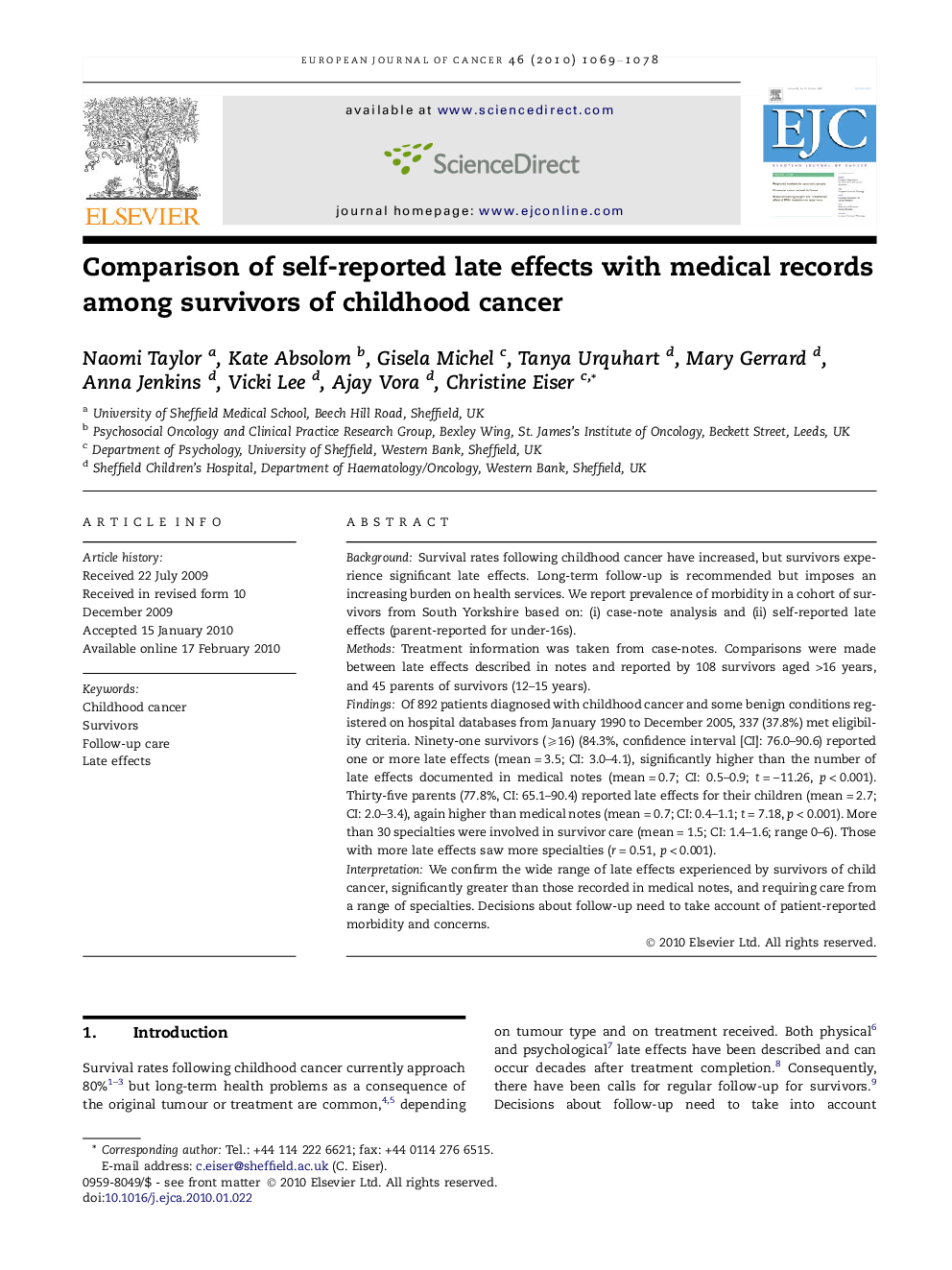| Article ID | Journal | Published Year | Pages | File Type |
|---|---|---|---|---|
| 2123346 | European Journal of Cancer | 2010 | 10 Pages |
BackgroundSurvival rates following childhood cancer have increased, but survivors experience significant late effects. Long-term follow-up is recommended but imposes an increasing burden on health services. We report prevalence of morbidity in a cohort of survivors from South Yorkshire based on: (i) case-note analysis and (ii) self-reported late effects (parent-reported for under-16s).MethodsTreatment information was taken from case-notes. Comparisons were made between late effects described in notes and reported by 108 survivors aged >16 years, and 45 parents of survivors (12–15 years).FindingsOf 892 patients diagnosed with childhood cancer and some benign conditions registered on hospital databases from January 1990 to December 2005, 337 (37.8%) met eligibility criteria. Ninety-one survivors (⩾16) (84.3%, confidence interval [CI]: 76.0–90.6) reported one or more late effects (mean = 3.5; CI: 3.0–4.1), significantly higher than the number of late effects documented in medical notes (mean = 0.7; CI: 0.5–0.9; t = −11.26, p < 0.001). Thirty-five parents (77.8%, CI: 65.1–90.4) reported late effects for their children (mean = 2.7; CI: 2.0–3.4), again higher than medical notes (mean = 0.7; CI: 0.4–1.1; t = 7.18, p < 0.001). More than 30 specialties were involved in survivor care (mean = 1.5; CI: 1.4–1.6; range 0–6). Those with more late effects saw more specialties (r = 0.51, p < 0.001).InterpretationWe confirm the wide range of late effects experienced by survivors of child cancer, significantly greater than those recorded in medical notes, and requiring care from a range of specialties. Decisions about follow-up need to take account of patient-reported morbidity and concerns.
